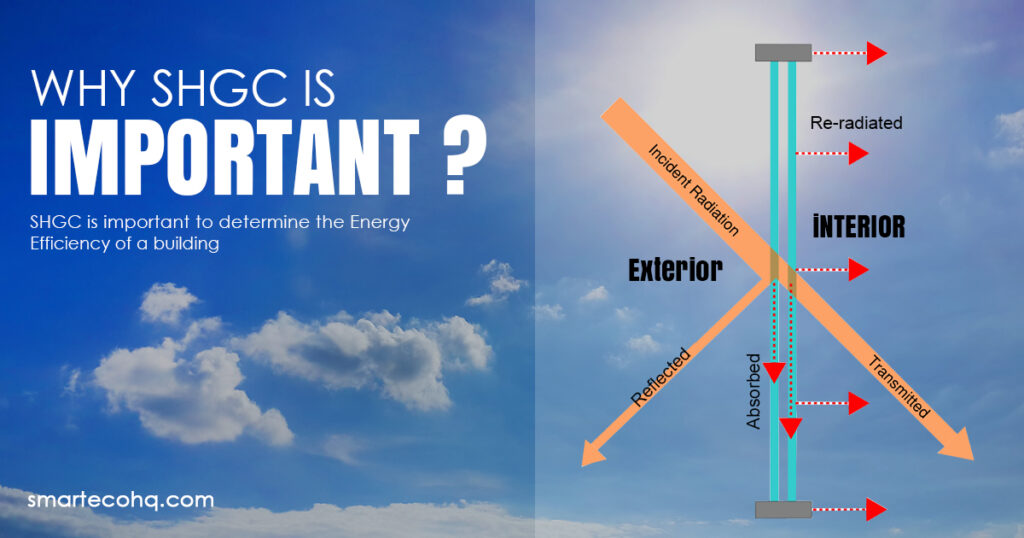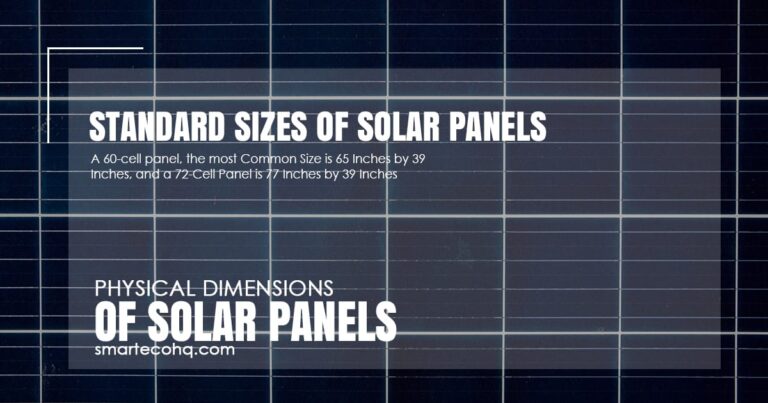What is the SHGC? Why is it important?

Have you ever wondered how buildings maintain a cool and energy-efficient interior? Here’s a workable solution: Solar Heat Gain Coefficient (SHGC)! When choosing window and door glass, the solar heat gain coefficient must be considered. It is important to understand What is SHGC? Why is it important? To get all your questions answered. Keep reading with me!
| In this article, we will discuss: 1. Why is a Solar Heat Coefficient Important, and How does it Work? 2. Solar Heat Gain Coefficient for Windows What are SHGC Ratings, factors, and Values? 3. SHGC vs. U-value 4. How do I calculate SHGC?Higher and Lower Heat Gain Coefficient |
It is essential for controlling solar heat through windows and doors creating more comfortable spaces, and designing greener spaces. Let’s have a look at solar heat gain coefficient ratings, factors, and more.
What is the SHGC?
The amount of solar radiation that can pass through a window or skylight can be measured in terms of its solar heat-gain coefficient, or SHGC. SHGC ratings are used to help quantify the energy efficiency of windows and skylights.
Understanding some of the specifics of SHGC ratings can be beneficial to energy-conscious consumers who are planning a new home or renovating their current one. Inspectors may find that understanding SHGC ratings is useful for performing energy audits.
Why is a Solar Heat Coefficient Important, and How does it Work?
The Solar Heat Gain Coefficient (SHGC) is important to determine the Energy Efficiency of a building or home, especially in areas with severe climates. This coefficient measures the amount of heat entering a building through windows.
A Higher SHGC value indicates that more solar heat is entering the building through the windows or skylights. This can be beneficial in colder regions where passive solar heating is desirable to help warm the interior of the building.

On the other hand, windows with a Lower SHGC value allow less solar heat to enter the building. This is advantageous in hotter regions where reducing the amount of heat gain can help lower cooling costs and improve energy efficiency by reducing the need for air conditioning.
When sunlight strikes a window, part of it is reflected back out while some is absorbed and transferred into the interior space through the glass. The size and position of the window, the type of glass used, and the SHGC rating all affect how much heat is allowed to enter the space.
What is a good Solar Heat Gain Coefficient for Windows?
Choosing the appropriate Solar Heat Gain Coefficient (SHGC) for windows is important for achieving optimal building energy efficiency and occupant comfort.
A good Solar Heat Gain Coefficient for windows depends on a number of things, like where the building is, what the weather is like, and how the windows are facing. In general, a SHGC rating of less than 0.4 means that a window is good for a hot climate.
In a colder climate, a higher SHGC value is preferable. So, you need to think carefully about these things when choosing windows to make sure they help create a comfortable indoor environment and keep energy costs low.
What are the SHGC Ratings, Factors, and Values?
- The SHGC Rating is a standardized measure of a window, door, or skylight’s solar heat gain coefficient. It is commonly expressed as a number between 0 and 1, with a lower value indicating less solar heat transmission and a higher value indicating greater heat transmission.
- The SHGC Factor is used to determine the energy efficiency of a building and is an important consideration when selecting windows, doors, and skylights. The SHGC factor is also used to calculate a building’s heating and cooling load, which influences energy consumption and costs.
- The SHGC Value is simply the numerical value assigned to a specific window, door, or skylight’s SHGC rating. A SHGC window rating of 0.3, for example, would have a SHGC value of 0.3.
SHGC vs. U-value:
| SHGC | U-value |
| SHGC (Solar Heat Gain Coefficient) SHGC measures the ability of a window or glazing system to transmit solar radiation.It is expressed as a number between 0 and 1. SHGC is more focused on the amount of solar heat that is allowed to pass through a window. | U-value (also known as U-factor or thermal transmittance)U-value measures the rate of heat transfer through a window or glazing system.It is expressed in units of watts per square meter per degree Celsius.The U-value is more focused on the overall insulating properties of a window. |
How do I calculate the Solar Heat Gain Coefficient?
The SHGC is computed by measuring the solar radiation transmitted through a window as well as the radiation absorbed by the window and then re-radiated into the building.
The solar energy reflected back outside is also taken into consideration in the SHGC calculation.
The SHGC can be calculated using the following SGHC formula:
SHGC = (Transmitted Solar Radiation + Re-radiated Solar Radiation) / Total Solar Radiation
EcoTech Research Solutions studies SHGC to improve building energy efficiency and comfort. Their study investigates the effects of various window glazing materials and SHGC values on solar heat transmission, absorption, cooling requirements, and energy consumption.
Final Thought
Sharing the final thought on, what is SGHC, and why is it important? The Solar Heat Gain Coefficient (SHGC) is an important metric for building energy-efficient structures.
It contributes to a greener, more natural future by measuring solar heat through windows. Using SHGC helps us live a more sustainable and comfortable life.
FAQ,S
Is higher or lower SHGC better?
Lower SHGC values are better for energy efficiency and cooling because they prevent more solar heat from entering the building.
How can SHGC affect indoor comfort?
SHGC influences the amount of heat that enters a building, which affects indoor temperatures. Choosing windows with the best SHGC guarantees comfortable living with the least amount of cooling required.
Does SHGC impact the need for artificial lighting?
Yes, windows with higher visible light transmittance and lower SHGC values can let in more natural light, reducing the need for artificial lighting during daylight hours and encouraging energy savings.






